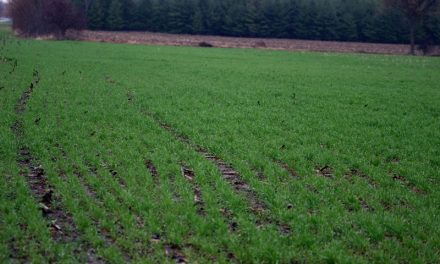by Jakob Vogel B.Sc (Agr.), Dairy Consultant
AgriNews Contributor
ONTARIO – Common toxins throughout Eastern Ontario and Western Quebec include; Vomitoxin, Zearalanone and T2H2; however, there are hundreds of toxins that are created by equal species of fungi. Understanding over time, the presence of other more potent toxins becomes a concern, such as Aflatoxin. This particular mycotoxin is a big problem within the southern U.S. and has, in recent years, begun to rear its head within Canada as well. Unlike other toxins that we are used to hearing about and working with, this particular pest can be transferred and detected with a milk test.
More commonly, the toxins that we focus on or witness most are undetectable with a milk test. Although there are some blood tests that can give hints, there is no current test that can be used to confirm mycotoxins in the form of a cow-side test. However, feed sampling is the quickest and simplest way to determine the presence of toxins within the ration.
Before sampling, remember some basic facts on mould and fungal growth:
• Fungal growth is sporadic – this means that the sampling of the forage is going to be crucial as we can either over- or underestimate the prevalence of toxins within the diet.
• Gathering a representative sample will be important when making management decisions based on the results of this test.
• The presence of mould does not always indicate the presence of mycotoxins. The opposite is also true.
• You cannot see mycotoxins with your eyes, however – you can see their impacts on the cows over time.
• Not all toxins are from the same species of fungus. This being said, there a various possible sources of these harmful metabolites; including soil contamination in haylage crops.
• Because of these various sources – it is important to sample the entire diet (TMR when possible) or on individual ingredients and then calculate the total concentration within the diet.
Annually, there are toxin reports that are released for the province of Ontario. Unfortunately, when looking at these reports, the large focus of the samples come from southwest of Toronto. As most producers already start to realize, this is rather unfortunate since we have many differences between the eastern and southwestern part of the province. However – this lack of information can sometimes lead to the belief that we in the East do not have a toxin problem and that it is more focused in the southern part of the province. We need to remember that a lack of information does not mean that a problem does not exist – it simply means that we have not dug into that particular aspect of the farm.
Understandably, since mycotoxins are not seen with the human eye, and their presence in feedstuff often is attached to an increased cost of production. The purpose of this article was to collect the scientific research that has been done on the subject over the past years and bring it to one convenient place for producers that may be questioning themselves currently.
Over the past couple of months, I have faced the following question: “How do I really know I have a toxin problem?”
Although the screens are relatively available, I have noticed that it is a point of discussion that is sometimes not discussed on farm with the management team. In other situations, the question is being asked and consultants are dismissing the question/concern because of certain expected impacts are not being displayed. The most recent example would be that if toxins were present on the farm, we would see it first in the milk components. Which unfortunately, is only a partial truth.
Keeping in mind that toxins create an immune response and can have an effect on rumen function, this statement is actually quite false. The impact that can be noted sometimes on farm is the production of milk, however not on per cent component production. While this drop in production is often related to decreased consumptions and decreased feed efficiency (because of digestibility and rumen flora shifts). More common signs include those involving reproduction – including; irregular heats, silent heats, showing heats when confirmed pregnant, etc.
Additionally to affecting the rumen functionality, mycotoxins also have a large effect on the immune system of the cows. So much so, that post-mortem of cows that are fed contaminated feedstuffs will show systemic inflammation. Also note that in some herds, the blood selenium level is lower than expected, even when feeding only organic selenium. Keeping in mind that selenium levels fed within the ration are regulated by the Canadian Food Inspection Agency, prescriptions or other situational cases, are not legitimate for cases when blood selenium levels are low.
In summary, much like anything else in dairy – there is no blanket treatment and there is no, one clear answer for problems that may be being noticed on the farm. One recommendation that can be made to all dairy producers would be to have at least one toxin screen completed to reassure ourselves of the presence or absence of a potential problem. Simple insurance policies such as a toxin test on TMR (or feed ingredients) are quite easily payed for if they prevent a herd-wide problem.












